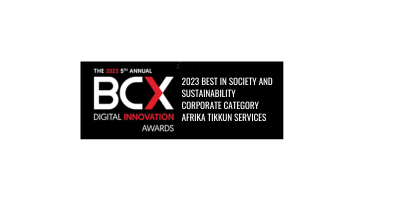Rasebotsa’s optimism and can-do attitude are contagious. He cites “empty pockets” as the inspiration to start his takkie-cleaning business. He learnt how to wash takkies properly by watching YouTube videos, and now he cleans takkies better than his customers ever could — and makes money from doing so.
Rasebotsa also has other side hustles, selling eggs and veggies. His valuable lessons include making sure there is a demand for what you sell, and never giving up, even when you get things wrong.
Rasebotsa’s empty pockets and optimism seemingly defy explanation. Stats SA’s latest Quarterly Labour Force Survey (QLFS) data, while mildly hopeful with a one percentage point decrease in youth unemployment in the last quarter, continues to paint a dismal picture for young people.
However, according to Afrobarometer’s data from 2021, young people, more than any other age group, are the least disenchanted about the future, despite being the most excluded across all dimensions.
Their optimism and resilience propel them to seek opportunities wherever they can — increasingly in the informal economy, finding a way to make money in microenterprises and small-scale hustles.
This “small picture” optimism — the ability to keep looking for opportunity and bounce back after disappointment — fuels an income even when jobs are scarce.
If society’s most excluded are still hopeful, surely we can do better than have them shoulder the burden of optimism alone? We must work with them to turn every effort at earning into stable sources of income and pathways to employment.
Hustle content
By paying close attention to where young people are directing their efforts and to what barriers they encounter, we will learn how to meet them where they are.
Since its inception in 2011, Harambee Youth Employment Accelerator has always believed in meeting young people where they are. Our offices in South Africa and Rwanda are physically located near taxi ranks or close to public transport nodes. This helped limit transport costs when we were doing in-person assessments pre-Covid. We continue to refine all of our offerings to take into account the lived reality of youth.
We know from the most recent QLFS data that young people like Octoria are hustling more now than they were pre-Covid. To make sure these hustles are supported and sustainable, Harambee has designed content based on the reserve of youth optimism and resilience.
This “hustle content” (now also used by partner organisations such as the National Youth Development Agency) is short and snappy — no longer than three minutes — and prominently features youth.
Our podcast series, Bozza Moves (Boss Moves), in partnership with community-based organisations such as Afrika Tikkun, features personal stories of “hustle success”, pushed via WhatsApp to nearly 3,000 young people. This increases engagement on the podcast and promotes shareability.
More episodes will follow, including TikTok-style videos. Other content includes Level Up, a series of highly engaging short videos with clear lessons and a focus on outcomes, and Biz Chats With Xoli, an agony aunt for young micro-entrepreneurs who answers their questions, helping them to start and stay hustling.
However, we cannot rely on content alone; we need to cut the red tape to help support young micro-enterprises. Providing registration readiness, inclusive skill development opportunities and access to financial tools such as micro-loans, financial record-keeping, saving schemes and rent-to-buy infrastructure.
Procurement aggregation, which allows SMMEs to club together and bid for procurement opportunities that would otherwise be out of reach, can be a vital solution. It has advocated the Gauteng’s Township Economic Development Act, which was signed into law this year.
Other ways to ease the burden include developing taxi ranks, which are hubs of informal activity, into micro-central business districts to support the taxi economy to scale and grow supporting value chains.
Opportunity knocks
Relatable content and inclusive procurement are not enough to address the structural exclusion that is youth employment. We must bring opportunity — formal jobs and public employment — to the doors of young people.
Many progressive private sector partnerships are driving concrete and collective action. Merchants, a leading outsourcing service provider, recently launched a state-of-the-art contact centre in Soweto; bringing hundreds of new, stable, high-paying contact centre jobs into the township. Located behind the Jabulani Mall, this facility will result in job creation and enterprise development for young people as a direct response to the country’s youth unemployment challenge.
School assistant programme
In terms of public employment, the Department for Basic Education (DBE) school assistant programme remains unprecedented and transformative in South African history in its reach and scale. Data from its third iteration in 2021 reveals how the programme activates and engages a cohort of economically underrepresented young people, across every area of the country, including those where virtually no other jobs are available.
The cohort represents a higher percentage of work-seekers from poorly resourced schools, who are twice as likely to come from rural areas and provinces with higher youth unemployment, and is more inclusive of women.
As the fourth wave of the DBE programme gets underway, we are following the exit paths and outcomes for earlier waves and learning how to help them build bridges into self-supported earnings.
South Africa’s unemployment statistics continue to emphasise the price we all pay — and will continue to pay, with interest — for decades of structural exclusion. Let us not let Rasebotsa’s empty pockets and optimism be the only tools in the fight towards greater economic inclusion.
If we act together to meet excluded young people where they are with connectivity, jobs in the formal economy, and targeted support for sustainable hustles and public employment, we can turn the abundance of their optimism into true inclusion.


